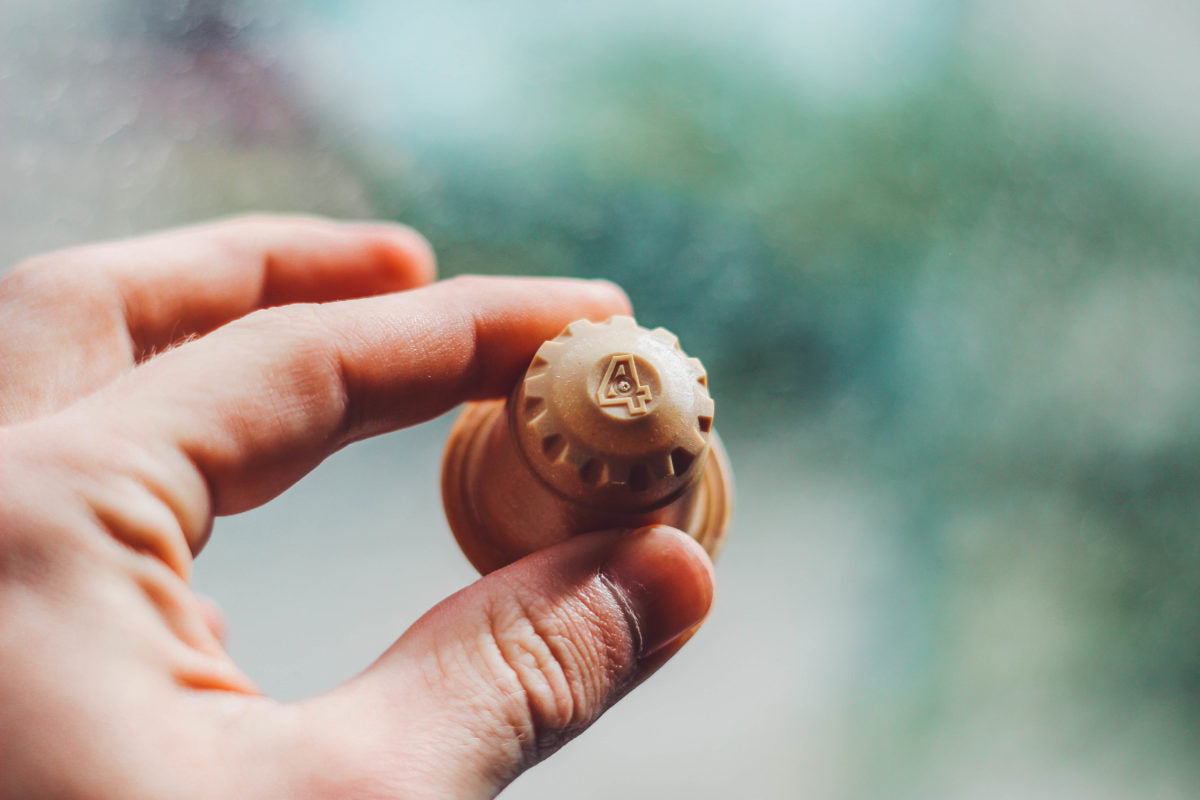
Bioplastics - panacea or greenwashing?
At rezemo, we use the bioplastic PLA as a raw material for our sustainable wooden coffee capsule . Bioplastics, colloquially also known as bioplastics, are on everyone's lips. They promise independence from fossil resources and are intended to stop the increasing littering of our oceans. But what is actually hidden behind the term "bioplastic" and what can these miracle materials do?
When is a plastic called “organic”?
The definition of bioplastic is not as clear as one might think. A bioplastic is either made from renewable raw materials, is biodegradable or both . This means, conversely, that a plastic made from petroleum can also be called a bioplastic if it is degradable. A bio-based plastic, on the other hand, is not necessarily biodegradable.
However, biodegradable does not mean that the bioplastic bag can be disposed of in the home compost. In order to receive a corresponding seal such as "ok biocompostable", the plastic must decompose under defined conditions in industrial composting plants. At around 60°C, the temperatures here are significantly higher than in the compost in your own garden. In addition, bioplastics do not normally contribute to the formation of humus, as classic compost materials do . Biodegradable only means that decomposition takes place down to the basic molecules CO 2 and H 2 O.
Do bioplastics break down into microplastics?
When many people hear the word decomposition, they immediately think of the term "microplastics". Does biodegradable plastic break down into microplastics ? That would definitely not be a desirable degradation product. Fortunately, the answer is: that is not the case.
Microplastics are defined as solid, insoluble, particulate and non-biodegradable synthetic polymers that are smaller than 5 millimeters [1] . They are created by the physical decomposition of larger plastic parts. The influence of wind, sunlight and mechanical forces causes the plastic to be ground into smaller and smaller particles. However, the molecular structure remains unchanged. Biological decomposition, on the other hand, corresponds to chemical decomposition. Here, molecular bonds are destroyed, so that harmless decomposition products such as CO 2 and H 2 O are ultimately created.
Advantages of Bioplastics
A major advantage of biodegradable plastics is that they do not break down into microplastics , or rather, the microplastic particles that are initially formed are subsequently broken down into harmless molecules. Unfortunately, this process takes a very long time, especially in nature, so biodegradable plastics cannot offer a real solution to the waste problem. However, for suitable applications (as biocompost bags or for repackaging fruit and vegetables), they can be a great alternative. In order to really take advantage of the benefits, however, the composting plants must then be able to break down these bioplastics. Currently, not all composting plants are able to guarantee the necessary conditions in terms of temperature and residence time. Therefore, a large proportion of biodegradable plastics are sorted out and then burned. In addition, the bioplastic should ideally be easily distinguishable visually from the conventional alternatives, otherwise it may be accidentally sorted out in the composting plant.
Which raw materials are used to produce bioplastics?
Bio-based plastics are mainly made from renewable raw materials . Bioplastics are often based on starch (polylactic acid PLA, thermoplastic starch TPS) or cellulose (cellulose regenerates such as viscose, cellulose hydrates such as cellophane). The corresponding raw materials are either starchy (corn, wheat) or rich in cellulose (wood). If you want to find out more about renewable raw materials and their advantages, you will find a separate article on our blog.
Another option that is currently being researched is the use of microorganisms to produce bioplastics. For example, special microbes can produce the biopolymer polyhydroxybutyrate (PHB) from substances in wastewater, which has properties similar to the widely used polypropylene (PP). These concepts are currently still in their infancy, but offer huge potential for future generations of bioplastics.
Conclusion
Although bioplastics do not offer a solution to all the problems that conventional plastics pose, there is still immense potential, particularly in the use of renewable raw materials . At present, bioplastics cannot compete with conventional plastics in terms of costs. Thanks to increased research and the growing demand for "green" alternatives, this price difference will become smaller in the future. Little by little, we will discover more and more bioplastics on our supermarket shelves.
At rezemo, we use the bioplastic PLA together with wood chips for our sustainable wooden capsules and are therefore a pioneer in the use and processing of bio-based materials.
[1]https://www.bund.net/themen/meere/microplastik/background/



